What is Agentic Reasoning: How AI Agents think, learn, and make decisions
Autonomous AI is no longer a future concept. It is already here, actively transforming industries and accelerating enterprise digital transformation. But what makes AI truly autonomous? The answer lies in Agentic Reasoning, the critical capability that empowers Agentic AI systems to move beyond executing predefined tasks and into independent problem-solving, adaptive decision-making, and thriving under uncertainty.
Consider, for instance, an Agentic AI system in e-commerce dynamically adjusting inventory in real time. During Black Friday, it can analyze live sales data, predict demand surges, and autonomously reallocate stock from low-performing warehouses to high-demand regions. This proactive intelligence demonstrates how Autonomous AI, powered by Agentic Reasoning, optimizes operations without human intervention.
At its core, Agentic Reasoning integrates machine learning, cognitive AI architectures, and real-time feedback loops to mimic human-like adaptability. By processing structured and unstructured data, identifying patterns, and refining strategies iteratively, Agentic AI delivers adaptive intelligence that static AI models cannot match. Why does this matter for enterprises? Because Agentic Reasoning powers autonomous business processes, intelligent automation, and adaptive customer support, enabling enterprise AI leaders to orchestrate workflows, unlock operational efficiency, and drive innovation at scale.
“We’ve started seeing Models doing evaluation and reasoning, much like we would have a line of thought, take our knowledge from historical experiences and current context, put that together and come up with a logical reasoning and conclusion or decision. Agentic AI with its reasoning capability will be a gamechanger for enterprise operational efficiency and effectiveness in days to come.” - Raj Koneru, Founder & CEO, Kore.ai
Table of contents
- What is Agentic Reasoning?
- The core principles of Agentic Reasoning
- The technological foundations of Agentic Reasoning
- Technical integration across the architecture
- Challenges in implementing Agentic Reasoning
- How can the right architecture address key challenges
- The future of Agentic Reasoning
- Conclusion: Way forward
Understanding Agentic Reasoning:
Agentic AI refers to a class of artificial intelligence systems designed to operate with autonomy, adaptability, and purpose. Unlike traditional AI that executes predefined tasks or follows static rules, Agentic AI is built with the ability to reason, plan, and act independently in pursuit of specific goals. These systems combine machine learning, cognitive architectures, and real-time feedback mechanisms to evaluate complex situations, adapt strategies dynamically, and make context-aware decisions.
In essence, Agentic AI behaves as an intelligent agent that can not only respond to its environment but also proactively shape outcomes, enabling enterprises to achieve higher levels of intelligent automation, operational efficiency, and business resilience.
Read more - What is Agentic AI, use cases, and step-by-step process
The core principles of Agentic Reasoning:
To understand why Agentic AI represents the next leap in Autonomous AI and enterprise digital transformation, it is important to examine the core principles of Agentic Reasoning. These principles form the foundation of autonomous decision-making, adaptive intelligence, and intelligent automation, giving AI systems the ability to think, adjust, and act with purpose, much like how humans approach complex problem-solving in dynamic environments. Agentic reasoning is defined by three primary attributes:
1. Autonomous problem-solving in Agentic AI
The defining strength of Agentic AI lies in its ability to solve problems without step-by-step human guidance. These systems are designed to take a broad, often complex objective and deconstruct it into smaller, manageable tasks. From there, they can prioritize what is most critical, determine the most effective course of action, and execute tasks independently. For enterprise leaders, this means more than efficiency, it means unlocking true end-to-end intelligent automation. Processes that once required constant oversight can now be entrusted to AI systems that work continuously in the background. The result is a shift in focus: instead of being bogged down by repetitive execution, organizations can redirect their people toward strategy, innovation, and high-value decision-making.
2. Adaptability and contextual awareness in autonomous AI
Business today is defined by volatility. Customer expectations shift quickly, markets change overnight, and disruptions often come without warning. Traditional AI systems, bound by rigid rules, struggle in this reality. Agentic Reasoning, however, introduces a new level of intelligence. With built-in contextual awareness and adaptive capabilities, Agentic AI goes beyond following explicit instructions. It interprets the meaning behind data, understands the environment it is operating in, and dynamically adjusts its decisions as circumstances evolve. This ability makes the system more than just reactive, it becomes proactive and resilient, positioning enterprises to thrive in fast-changing and uncertain environments.
Learn more - The evolution from prompt engineering to contextual AI in AI systems
3. Self-Learning and continuous improvement in Agentic AI
One of the most transformative aspects of Agentic AI is its ability to improve over time. Unlike static AI models that remain unchanged after deployment, Agentic AI uses iterative refinement and self-learning to continuously evaluate the impact of its actions. When an outcome falls short, the system doesn’t repeat the same mistake. Instead, it adapts its strategy, refines its reasoning, and applies those learnings to future scenarios. This process mirrors human cognitive development, where experience drives better decision-making. For enterprises, this translates into sustained performance gains, operational efficiency, and resilience, as the AI becomes increasingly capable the longer it operates within the organization.
Multi-Agent orchestration: Scaling intelligence across the enterprise
The true potential of Agentic Reasoning extends beyond individual systems. Through multi-agent orchestration, networks of AI agents can work collaboratively across domains, coordinating tasks and sharing intelligence to solve complex, interdependent challenges.
For example, in banking, one agent may monitor real-time transactions for potential fraud, another may adjust credit risk models based on market fluctuations, while a third manages personalized customer communications. Working in harmony, these agents ensure compliance, mitigate risk, and enhance customer trust, all in real time. This orchestrated approach creates agentic workflows that mirror how financial teams operate across risk, compliance, and customer service, but at a scale and speed only AI can achieve.
Looking ahead, multi-agent orchestration will be central to enterprise AI adoption. It will allow organizations to scale intelligence across business units, achieve end-to-end automation, and unlock new opportunities for innovation and resilience.
Read more - Kore.ai Multi-Agent Orchestration
The technological foundations of Agentic Reasoning:
At the heart of Agentic AI lies a reasoning engine built on three tightly integrated stages: Plan, Retrieve, and Generate. Together, these stages transform raw user input into autonomous decision-making and trust-enriched outputs, enabling Agentic Reasoning to function reliably across enterprise applications. This architecture not only enhances accuracy but also ensures that the system adapts, learns, and delivers value in dynamic business environments.
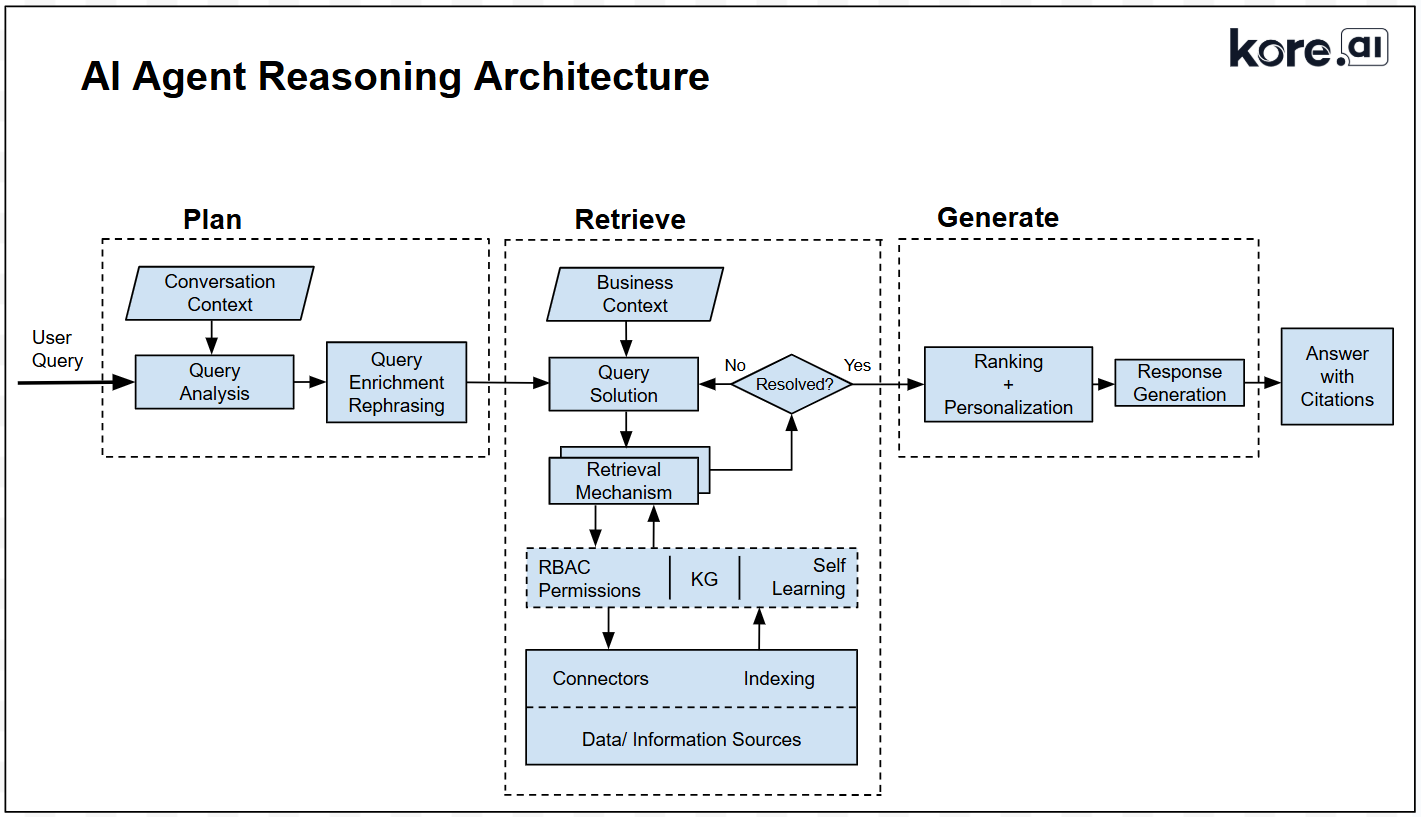
1. Plan: Establishing query intent and context
The Plan stage serves as the system’s starting point. Here, the user’s input is carefully analyzed and refined so that it can be translated into precise, contextually relevant queries. This is where natural language understanding (NLU) and large language models (LLMs), combine to establish context, interpret intent, and prepare the ground for accurate retrieval.
- Conversation context: The system captures and interprets the user’s query using pre-trained transformer models like BERT or GPT. It analyzes semantics, syntax, and intent while preserving past exchanges through context windows. This continuity is essential for enterprise use cases such as customer support or technical troubleshooting, where multiple queries build on each other.
- Query analysis: The input is parsed to extract key entities (e.g., product IDs, transaction codes, issue categories). Techniques such as Named Entity Recognition (NER) and dependency parsing ensure that important business terms, like “shipment delay” in supply chain management or “account lockout” in banking, are correctly identified.
- Query enrichment and rephrasing: Domain-specific ontologies and knowledge graphs (KGs) enhance the query to improve precision. For example, a vague input like “Why is my shipment late?” can be enriched into “What is the delay reason for shipment ID X123?”. Reinforcement learning continually improves this enrichment process by learning from user feedback, ensuring queries become more accurate and actionable over time.
Why this matters for enterprises: By clarifying intent and context upfront, organizations avoid wasted cycles and ensure that AI systems deliver responses aligned with business priorities. This stage is the foundation of adaptive AI systems that can truly understand user needs.
Read more - Kore.ai Search and Data AI
2. Retrieve: Contextual data retrieval and alignment
Once the query is enriched, the Retrieve stage aligns it with enterprise data sources, fetching information that is both relevant and role-appropriate. This is powered by semantic search, hybrid indexing, and strict access controls, ensuring security, compliance, and contextual accuracy.
- Business context integration: Retrieval strategies adapt based on organizational priorities and user roles. For example, a finance manager’s query might surface financial datasets, while an HR user’s query may prioritize recruitment or employee records.
- Retrieval mechanisms:
- Role-Based Access Control (RBAC): Ensures the system retrieves only the data a user is authorized to view, critical for industries like banking and healthcare.
- Knowledge Graphs (KGs): Provide semantic context by mapping relationships between entities. In retail, for example, a KG might link customers, orders, and inventory for holistic insights.
- Self-learning mechanisms: Retrieval strategies improve over time using reinforcement learning, making searches smarter and more relevant with each interaction.
- Role-Based Access Control (RBAC): Ensures the system retrieves only the data a user is authorized to view, critical for industries like banking and healthcare.
- Data integration: The system seamlessly connects with structured and unstructured enterprise data, from ERP systems and databases to APIs and document repositories.
- Indexing frameworks: Both inverted indexing (for keyword searches) and vector-based indexing (for semantic searches using embeddings) are employed. This hybrid approach ensures the system can answer straightforward factual queries like “What was Q2 revenue?” as well as nuanced ones like “Why is sales growth slowing in Q3?”.
- Resolution loop: If no suitable resolution is found, the system loops back to the Plan stage for enrichment or reformulation. This recursive process guarantees adaptability in handling complex, ambiguous queries.
Why this matters for enterprises: Reliable retrieval ensures that decision-making is grounded in factual, role-relevant, and compliant data, making Agentic Reasoning a trustworthy backbone for enterprise AI adoption.
3. Generate: Context-aware output generation
The Generate stage transforms the retrieved information into coherent, actionable, and trust-enriched outputs. This is where retrieval-augmented generation (RAG), personalization, and citation frameworks come together to deliver enterprise-ready results.
- Ranking and personalization: Responses are ranked based on contextual relevance and user preferences. For example, a support agent’s query may highlight troubleshooting guides, while an executive’s query might surface strategic dashboards.
- Response generation: Advanced generative models such as GPT or fine-tuned transformers create responses that are clear, contextual, and human-readable. Importantly, they are enriched with real-time information from external data sources through RAG techniques. For instance, a compliance officer asking about new regulations receives a synthesized summary with direct references to the updated legal text.
- Answer with citations: Transparency is ensured by embedding citations from enterprise data sources. Metadata tracking allows users to verify the origin of each fact or recommendation, a feature that is especially critical in industries such as finance, healthcare, and legal services.
Why this matters for enterprises: Outputs are not only accurate but also trustworthy, explainable, and tailored to user needs, which is essential for building confidence in Autonomous AI systems.
Read more - What is RAG - Retrieval-Augmented Generation ?
Technical integration across the architecture:
The seamless interplay of the three stages, Plan, Retrieve, and Generate, is only possible through a set of powerful technical pillars. These pillars form the backbone of Agentic Reasoning in Agentic AI, ensuring that systems are not only capable of processing queries but also scalable, secure, adaptive, and contextually intelligent.
1. Scalability: Powering enterprise-grade autonomous AI
Modern enterprises demand systems that can scale effortlessly as workloads increase. Distributed architectures, powered by technologies such as Kubernetes and Apache Kafka, allow Agentic AI to handle high query volumes in real time without performance bottlenecks. Pre-trained transformer models further reduce the computational costs of fine-tuning while maintaining high accuracy. This scalability ensures enterprises can deploy Autonomous AI at scale, supporting diverse use cases from customer service automation to enterprise decision support.
Read more - Autonomous AI Agents: the new workforce partners you can't afford to ignore
2. Data security and compliance: Building trust in Agentic Reasoning
For enterprise AI adoption, trust is non-negotiable. Role-Based Access Control (RBAC) and encryption protocols such as AES-256 safeguard sensitive information while maintaining compliance with regulations including GDPR and HIPAA. Role-aware workflows strictly enforce boundaries between accessible and restricted data, ensuring that Agentic AI systems respect organizational hierarchies and security requirements. By embedding compliance into the architecture, organizations can confidently scale intelligent automation across regulated industries such as finance, healthcare, and government.
Read More - Kore.ai: AI Security, Compliance, and Governance
3. Reflexivity and continuous learning: Driving adaptive AI
A hallmark of Agentic Reasoning is its ability to learn and adapt over time. Reflexive mechanisms, including self-prompting and recursive evaluation, help identify knowledge gaps and refine outputs iteratively. Reinforcement learning further ensures that both retrieval accuracy and response quality improve continuously based on user interactions. This feedback-driven adaptability enables Agentic AI to evolve with business needs, mirroring human reasoning and delivering long-term value through adaptive AI capabilities.
4. Hybrid search techniques: Combining precision and context
Information retrieval is at the core of reasoning. By combining semantic search, graph traversal, and hybrid indexing, the architecture excels at handling both straightforward factual queries and complex, context-heavy questions. Attention mechanisms in transformer models sharpen the system’s focus on the most relevant aspects of structured and unstructured inputs, whether they are text, images, or multi-modal data. This ensures Agentic AI systems provide responses that are both precise and contextually aligned, powering enterprise AI workflows that demand accuracy and depth.
The technical pillars of scalability, security, reflexivity, and hybrid search ensure that the Plan–Retrieve–Generate architecture is not just a conceptual model but a robust, enterprise-ready foundation for Agentic Reasoning. Together, these integrations enable Autonomous AI systems to operate at scale, adapt intelligently, safeguard trust, and deliver actionable insights, unlocking the full potential of enterprise digital transformation.
Challenges in implementing Agentic Reasoning:
While Agentic Reasoning holds immense promise in revolutionizing Agentic AI and enabling truly Autonomous AI, its deployment is not without challenges. Organizations must overcome a blend of technical, operational, ethical, and cultural hurdles to fully realize its potential.
1. Contextual understanding
The success of Agentic Reasoning depends heavily on its ability to interpret and apply context. Enterprise processes are nuanced, with decisions often hinging on subtle cues that differ across departments, regions, or workflows. Training AI systems to recognize these distinctions requires not only vast and diverse datasets but also the ability to align reasoning with business objectives. Inadequate contextual modeling can result in misaligned or costly decisions, undermining trust in the system.
Read more - The evolution from prompt engineering to contextual AI in AI systems
2. Ensuring data accuracy in dynamic environments
Agentic AI is only as reliable as the data it processes. The challenge lies in maintaining accuracy, relevance, and timeliness in environments where data is constantly changing. Noisy, incomplete, or contradictory datasets can derail reasoning outcomes. Techniques such as Retrieval-Augmented Generation (RAG) help by integrating both internal and external knowledge sources, but this introduces complexity around validation, compliance, and privacy. Continuous curation of databases, knowledge graphs, and repositories is essential to prevent flawed outputs caused by outdated or irrelevant information.
3. Bridging data silos
Enterprise data is often fragmented across departments, systems, and formats. For Agentic Reasoning to perform optimally, AI agents require seamless access to both structured and unstructured data. Achieving this requires significant integration efforts and strong governance mechanisms to ensure sensitive data remains protected. Compliance with regulations such as GDPR and HIPAA adds another layer of complexity, making data unification a critical but difficult step.
Read more - Breaking knowledge silos with RAG: The future of enterprise search
4. Accountability in autonomous decision-Making
As AI systems gain autonomy, the question of accountability becomes increasingly complex. When an Agentic AI system makes an independent decision, how do organizations ensure responsibility and traceability? This is especially pressing in regulated industries like healthcare and finance, where decisions carry significant consequences. Enterprises must establish governance frameworks, robust audit trails, and transparent accountability mechanisms to ensure that decisions remain explainable and defensible.
Read more - What are Agentic workflows: How are they redefining process automation in enterprises?
5. Ethical oversight
Autonomous reasoning raises critical ethical concerns. How do we ensure fairness, avoid bias, and maintain transparency when systems operate with limited human intervention? These are not abstract questions but practical issues with real-world consequences, particularly in areas like hiring, lending, or law enforcement. Ethical oversight requires the design of responsible AI guardrails, bias mitigation strategies, and transparency frameworks to safeguard outcomes and build trust.
6. Scaling across use-cases
A system designed for one process may not perform as effectively in another. Each enterprise workflow comes with unique requirements, and scaling Agentic Reasoning across multiple domains often demands customization. This can be time-intensive and resource-heavy, limiting scalability. Organizations need modular architectures and adaptive frameworks to expand capabilities without extensive reengineering.
7. Balancing human-AI collaboration
Finding the right balance between AI autonomy and human oversight is a significant challenge. Too much autonomy can erode trust if the system’s reasoning is opaque, while excessive human intervention diminishes the benefits of automation. Enterprises must clearly define the boundaries of human-in-the-loop participation, ensuring transparency while preserving the efficiency gains of Agentic AI.
8. Governance and regulatory compliance
Dynamic, autonomous decision-making often collides with rigid regulatory frameworks. Industries like finance and healthcare operate under strict standards that demand auditability, accountability, and transparency, qualities that are not inherently native to AI systems. Bridging this gap requires careful system design, strong compliance protocols, and often trade-offs between speed and regulatory alignment.
9. Cultural and organizational resistance
Finally, the human factor cannot be overlooked. Implementing Agentic Reasoning is as much a cultural transformation as it is a technological one. Employees may fear job displacement, while stakeholders may question ROI or the risks of large-scale AI adoption. Overcoming this resistance requires clear communication, robust change management, and demonstrable success stories that highlight the tangible benefits of agentic systems.
These challenges are significant, but they are not insurmountable. By combining advanced technology, rigorous governance, ethical oversight, and strategic change management, enterprises can successfully deploy Agentic Reasoning. Organizations that address these hurdles head-on will not only strengthen trust and accountability but also position themselves at the forefront of enterprise AI innovation, unlocking value across industries and use cases.
How the right architecture addresses key challenges:
The successful implementation of Agentic Reasoning requires more than algorithms; it demands a robust, adaptive architecture. By harmonizing contextualized decision-making, dynamic data accuracy, governance, and scalability, the right architecture empowers Agentic AI systems to deliver precise, explainable, and enterprise-aligned outcomes.
1. Distinguished capabilities of the architecture
- Contextualized decision-making - Agentic AI thrives on context. The right architecture calibrates AI systems to align decisions with organizational objectives, ensuring outputs are not only technically accurate but also relevant across diverse workflows, geographies, and business units. By incorporating workflow-specific intelligence, the architecture enables systems to interpret nuanced data and address subtle contextual variations that impact enterprise processes. This ensures decisions are precise, purposeful, and strategically aligned.
- Dynamic data accuracy in complex ecosystems - Data integrity is the lifeblood of reasoning. The architecture leverages retrieval-augmented generation (RAG) and other advanced retrieval methods to pull contextually relevant information from both internal and external repositories. Rigorous validation mechanisms safeguard against noise, bias, or outdated data, ensuring compliance with privacy and regulatory standards. Continuous curation of databases and knowledge graphs prevents obsolescence, guaranteeing that AI-powered decision-making remains reliable, compliant, and current.
- Unifying disparate data silos - Enterprises often struggle with fragmented data spread across departments and formats. The right architecture breaks down these silos by unifying structured and unstructured data into a single reasoning framework. Layered with enterprise-grade security protocols, it ensures sensitive data is accessed securely while adhering to global standards such as GDPR and HIPAA. The result is an AI ecosystem that is integrated, secure, and trustworthy.
2. Governance, accountability, and ethical oversight
Autonomous decision-making cannot succeed without strong governance. The architecture embeds accountability and ethical safeguards at its core:
- Audit trails and transparency: End-to-end traceability provides documentation of every autonomous decision, critical for regulated industries such as finance, healthcare, and government.
- Bias mitigation algorithms: Proactive methodologies identify and mitigate bias, ensuring equitable and transparent outcomes.
- Regulatory compliance: Compliance standards are seamlessly integrated, automating adherence while maintaining audit-ready transparency.
This governance-first approach ensures Agentic AI systems remain trustworthy, fair, and defensible.
3. Scalability and human-AI symbiosis
- Effortless scalability across domains - A modular, flexible design ensures that the architecture can scale seamlessly across multiple domains and use cases. Pre-built integrations and low-code/no-code configurability reduce deployment complexity, while adaptive components allow the system to evolve with changing enterprise needs. This makes scaling Agentic Reasoning both efficient and sustainable.
- Human-AI collaboration at its core - Even the most autonomous AI requires human touchpoints. The architecture integrates human-in-the-loop (HITL) mechanisms at critical decision points, striking a balance between AI autonomy and human oversight. This balance fosters trust, enables adaptability, and ensures that decisions reflect both machine efficiency and human judgment.
4. Addressing cultural and operational challenges
Technology alone cannot drive transformation. Adoption of Agentic AI requires cultural alignment and organizational readiness. The right architecture supports this through:
- Transparent communication and change management, reducing resistance among employees and stakeholders.
- Demonstrable ROI and success stories, showcasing measurable business value and building confidence in scaling agentic reasoning across the enterprise.
The right architecture is not simply a technical enabler; it is a strategic foundation for enterprise AI transformation. By embedding advanced retrieval methods, rigorous governance protocols, ethical safeguards, and seamless scalability, it empowers organizations to overcome technical, operational, and cultural barriers. The result is an enterprise AI ecosystem where Agentic Reasoning delivers autonomy, precision, and adaptability at scale, unlocking the full transformative potential of Autonomous AI.
The future of Agentic Reasoning:
Agentic Reasoning is poised to become a defining pillar of next-generation artificial intelligence, unlocking unprecedented opportunities for innovation, efficiency, and adaptability across industries. As the capabilities of Agentic AI expand, several key trends are shaping its trajectory, ensuring it will play a central role in the evolution of Autonomous AI and enterprise digital transformation.
Collaborative and multi-agent systems
The future of Agentic Reasoning lies in collaboration at scale. Instead of isolated systems, we will see multi-agent environments where specialized AI agents cooperate to solve complex, interdependent problems. These agents will share insights, delegate tasks, and coordinate seamlessly, mirroring the way human teams operate, but with the speed and intelligence of advanced AI.
- Healthcare example: AI agents may work together to manage patient care holistically, analyzing medical records, supporting diagnosis, recommending treatments, and scheduling follow-ups in real time.
- Enterprise example: In global supply chains, one agent could monitor demand signals, another manage logistics, and a third handle compliance, with orchestration ensuring alignment across the network.
This collaborative model will enable enterprises to tackle challenges of unprecedented complexity, from precision medicine to global risk management, redefining the boundaries of enterprise AI innovation.
Improved scalability and accessibility
Advancements in cloud computing and distributed architectures will make Agentic Reasoning systems more scalable, resilient, and accessible than ever before. Enterprises will no longer need to maintain costly infrastructure, as cloud platforms provide elastic computational power and storage for high-volume workloads.
This scalability democratizes access:
- Large enterprises can scale agentic reasoning across multiple business units and geographies.
- Smaller organizations can tap into autonomous decision-making without prohibitive costs.
By lowering barriers to entry, scalability ensures Agentic AI will become a standard capability across industries, much like cloud adoption did a decade ago.
Strengthened ethical and regulatory frameworks
As Agentic AI systems gain autonomy, their decisions will carry greater weight and consequences. This makes ethical frameworks and governance protocols non-negotiable. Enterprises and regulators alike will need to ensure that autonomous systems operate within transparent, auditable, and accountable boundaries.
- Bias mitigation will prevent discriminatory outcomes in areas like hiring, lending, and insurance.
- Auditability and explainability will be critical in finance, healthcare, and government to ensure compliance with evolving regulations.
- Responsible AI principles will guide deployment, ensuring that systems respect privacy, fairness, and user rights.
The organizations that invest in robust governance and ethical oversight will be the ones to scale Agentic Reasoning responsibly while maintaining public trust.
Read more - The framework for responsible AI
Domain-specific advancements
The next phase of Agentic Reasoning will see specialization by industry and domain. Instead of generic AI systems, we will witness the rise of domain-specific Agentic AI models designed to address unique challenges with precision.
- Healthcare: Personalized medicine powered by continuous patient monitoring, real-time diagnostics, and adaptive treatment recommendations.
- Finance: Enhanced fraud detection, automated compliance, and intelligent investment strategies driven by autonomous reasoning.
- Manufacturing: Predictive maintenance, adaptive production scheduling, and supply chain optimization with multi-agent orchestration.
- Retail and E-commerce: Dynamic pricing, personalized customer engagement, and inventory optimization at scale.
These targeted advancements will ensure that Agentic Reasoning delivers more precise, context-aware outcomes, directly aligned with the goals of each industry.
The evolution of Agentic Reasoning signals a future where Autonomous AI systems are not only smarter but also more collaborative, ethical, scalable, and industry-specific. As enterprises adopt these systems, AI will shift from being a supportive tool to becoming a strategic partner in decision-making and innovation. The result will be smarter, adaptive AI ecosystems that continuously learn, collaborate across domains, and align with enterprise and societal objectives. Organizations that embrace this shift will not only future-proof their operations but also set the pace for the next wave of enterprise AI transformation.
Conclusion: Way forward
Agentic Reasoning stands at the threshold of a new era in artificial intelligence, where systems do not simply follow instructions but continuously adapt, learn, and improve over time. By merging complex reasoning engines with multi-modal data processing and self-reflective capabilities, Agentic AI is redefining how machines perceive, interpret, and interact with the world around them.
The future of enterprise AI will be shaped by networks of intelligent agents working collaboratively, discovering one another, and coordinating seamlessly to support both organizational goals and human decision-makers.
“The future of the enterprise will be driven by networks of intelligent agents that can collaborate, self-organize, and orchestrate workflows. These systems will combine autonomous agents, sophisticated enterprise knowledge retrieval, and intelligent orchestration to deliver resilience and adaptability at scale.” - Prasanna Arikala, Product Head, CTO, Kore.ai
What lies ahead is clear: Agentic Reasoning will transform workflows, enable autonomous decision-making, and solve complex problems with unprecedented precision. From healthcare to finance, from manufacturing to logistics, its impact will be felt across every sector. The true power of Agentic Reasoning is not just in its technical sophistication but in its ability to redefine the partnership between humans and machines, unlocking new efficiencies, enabling collaboration at scale, and driving sustainable innovation.
As we step into this new frontier, the transformation is only beginning. With its ability to adapt, self-learn, and integrate seamlessly into enterprise ecosystems, Agentic Reasoning is set to become a cornerstone of next-generation AI, pushing the boundaries of what intelligent systems can achieve and shaping industries for years to come.
FAQs
1. What is Agentic Reasoning?
Agentic Reasoning is the capability that enables AI systems to move beyond static, rule-based automation and make autonomous, context-aware decisions. It allows AI to plan, adapt, and refine outcomes much like human reasoning, making it a foundation of next-generation Agentic AI and Autonomous AI.
2. How is Agentic AI different from traditional AI?
Traditional AI executes predefined tasks within narrow boundaries, excelling at repetitive automation but struggling with change or ambiguity. Agentic AI, powered by Agentic Reasoning, is adaptive. It can interpret context, handle unstructured data, learn from experience, and collaborate with other agents. This makes it ideal for dynamic enterprise workflows such as fraud detection, supply chain optimization, and adaptive customer engagement.
3. Will Agentic AI replace human jobs?
This is one of the most asked (and debated) questions online. Agentic AI is not designed to replace humans but to redefine the partnership between humans and machines. By handling repetitive, complex, or high-volume decision-making, Agentic Reasoning frees people to focus on strategic, creative, and judgment-driven work. In practice, it shifts roles rather than eliminates them, enabling a collaborative model of human-AI symbiosis.
4. How does Agentic AI ensure ethical and responsible AI?
Autonomy raises questions of trust, bias, and accountability. To address this, Agentic AI systems are built with governance frameworks, bias detection algorithms, audit trails, and compliance protocols. These ensure that decisions are explainable, transparent, and fair, especially in regulated industries like finance, healthcare, and government. Ethical frameworks will continue to evolve alongside regulations, making responsible AI central to adoption.
5. What is the future of Agentic Reasoning?
The future lies in multi-agent orchestration, where networks of intelligent agents collaborate across domains to tackle complex, interdependent challenges. Combined with cloud scalability, domain-specific AI models, and ethical governance, Agentic Reasoning will become a cornerstone of enterprise AI transformation. Its long-term impact will be to create adaptive ecosystems of agents that learn, evolve, and support human decision-making with unprecedented precision.

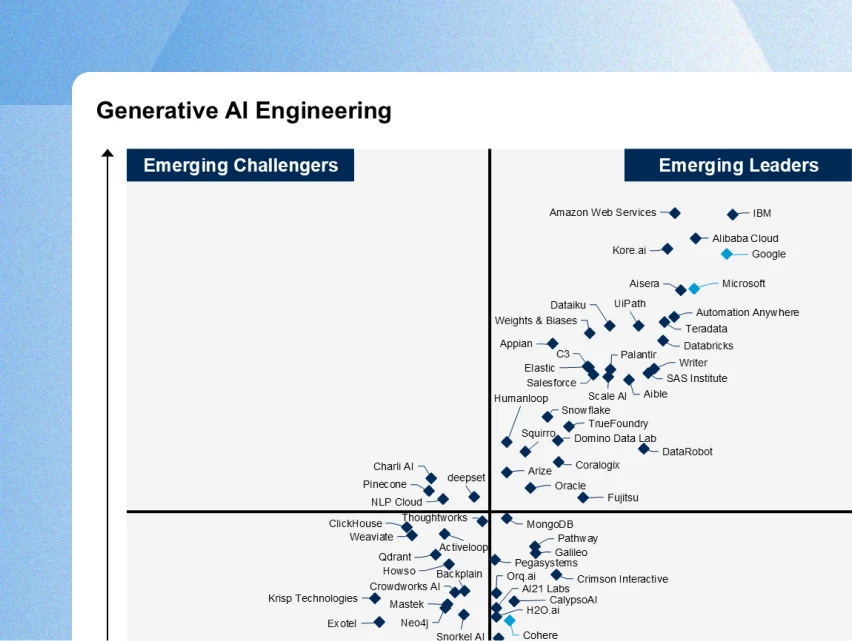
.webp)
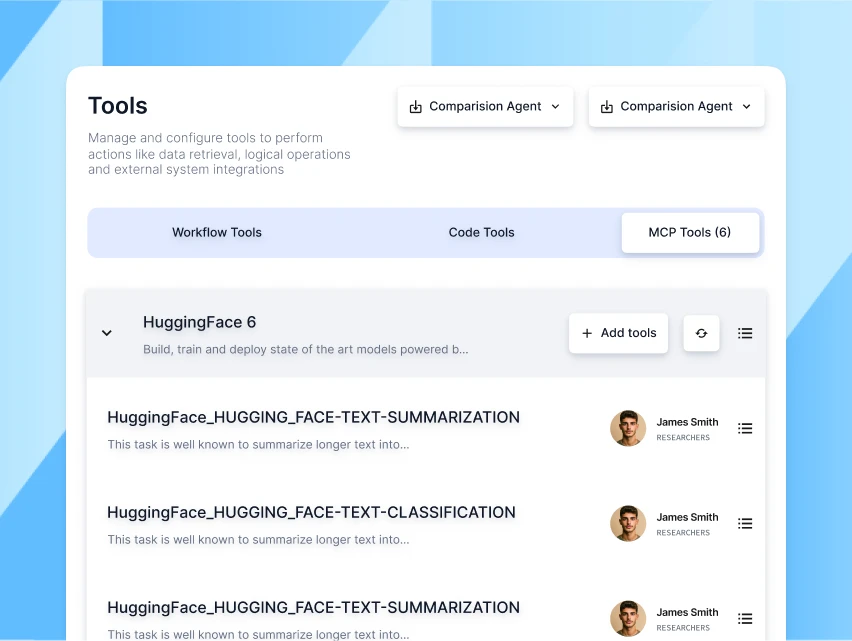
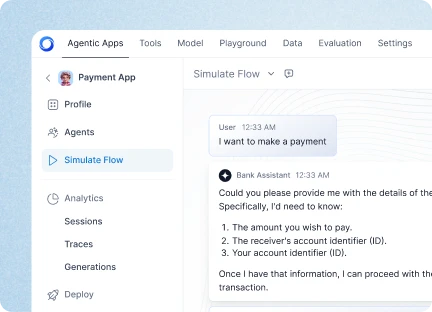

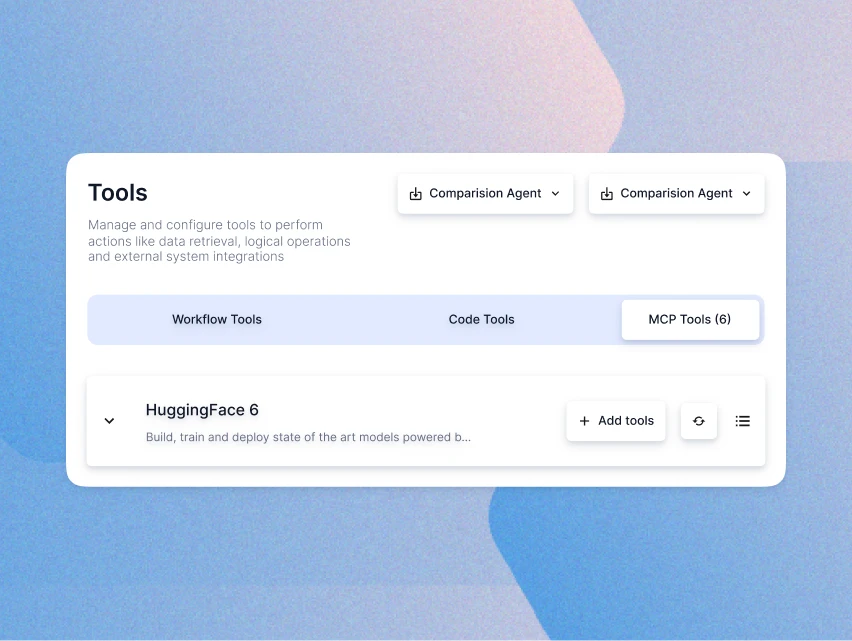
.webp)



